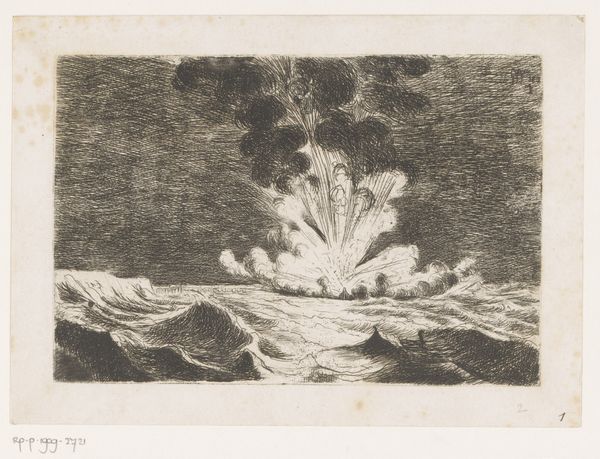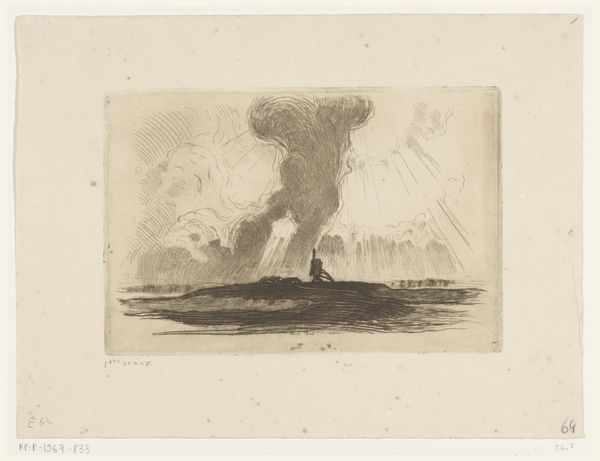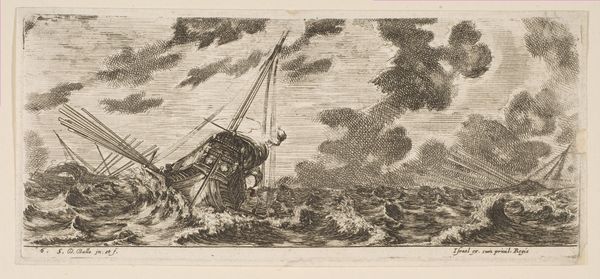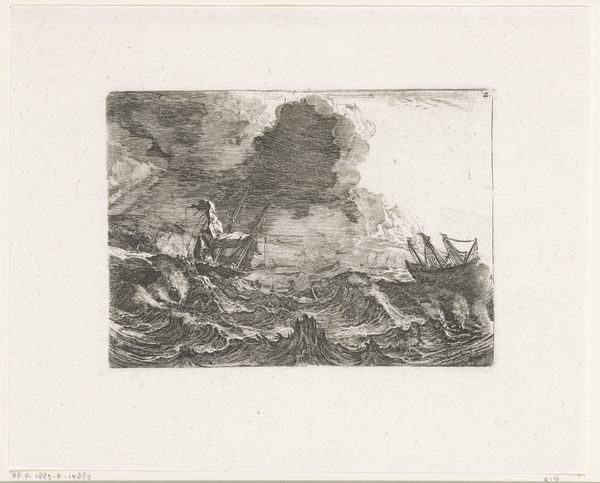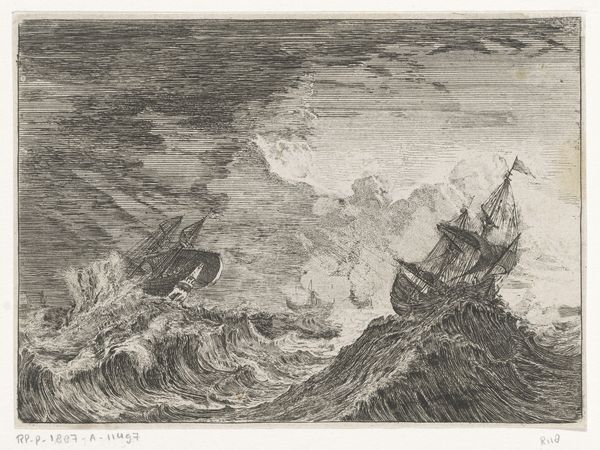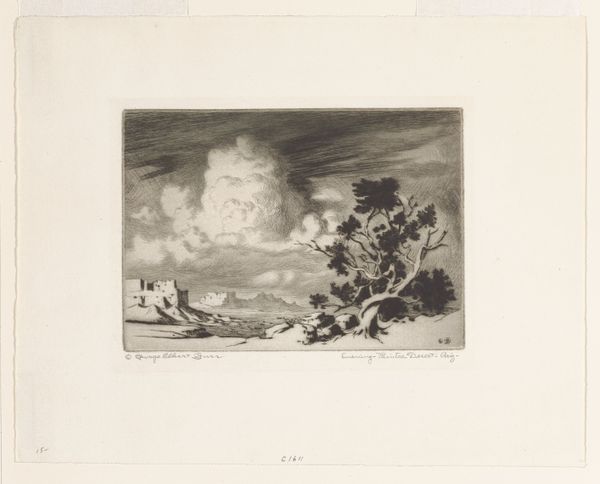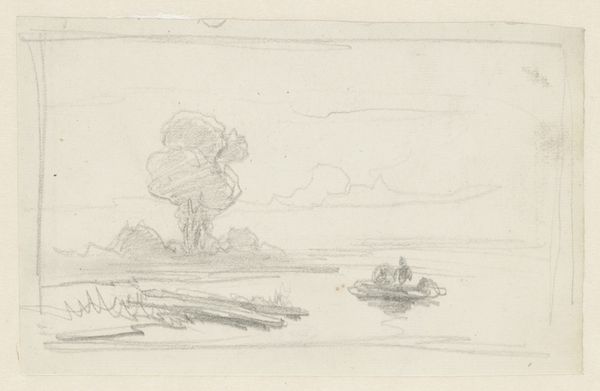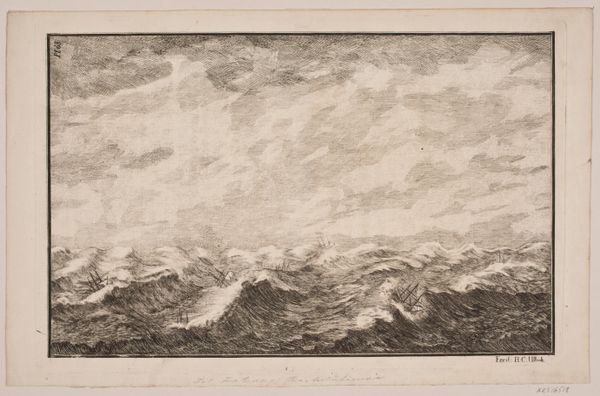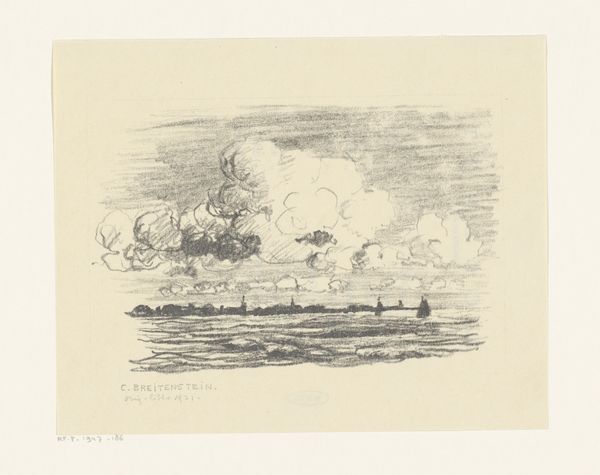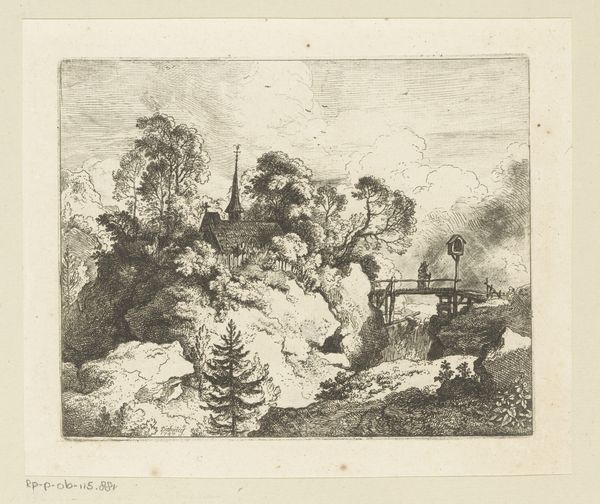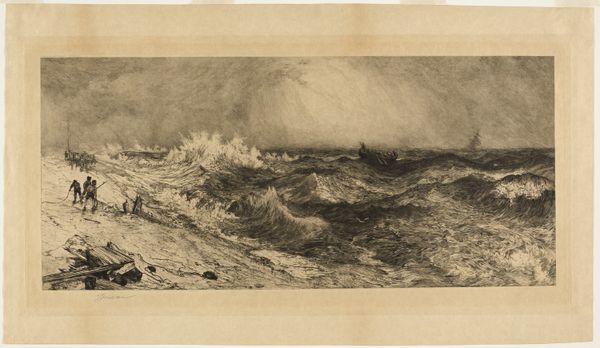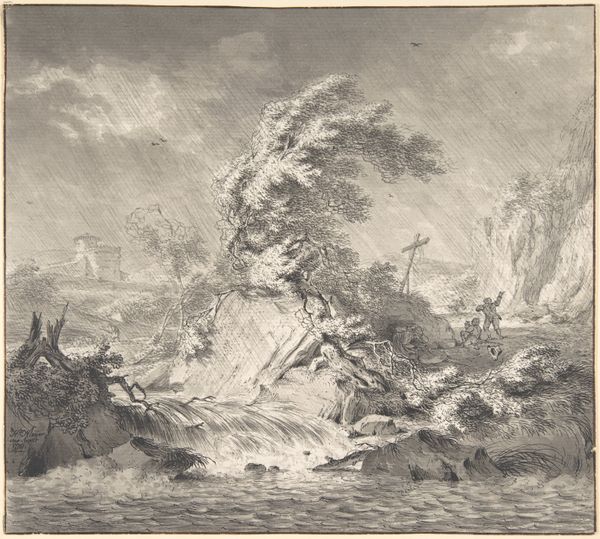
etching
#
narrative-art
#
etching
#
landscape
#
etching
#
romanticism
Dimensions: height 100 mm, width 149 mm
Copyright: Rijks Museum: Open Domain
Curator: Before us is Gustave Buschmann's 1842 etching, "Parma's bridge at Antwerp blown up by a burner." It's a powerful image rendered in the delicate medium of etching. Editor: The instant I look at this, I think of elemental forces unleashed. Look at that central explosion—the water and sky consumed by fire. It's apocalyptic, even at this scale. Curator: Absolutely. And the medium—etching—serves this reading by providing high tonal contrast. Notice how the artist manipulates line density to create this visual hierarchy, directing our gaze toward the escalating dynamism of the central explosion. Editor: The drama relies on iconographic understanding of Romantic era explosions and the sea, both carrying potent messages of the sublime and human insignificance in the face of immense destructive forces. Is there a known historical reference here? Curator: Yes, the title references an event where a bridge in Antwerp was strategically destroyed. Buschmann uses compositional symmetry and controlled mark-making to express the event’s impact. The bridge itself, fragmented on the horizon line, is almost like a caesura within the picture. Editor: Right, so the act of destruction becomes symbolic – it disrupts the linear progression, perhaps the very notion of forward momentum. And what of water? Doesn't it usually represent cleansing and rebirth? Its presence here becomes intensely ironic given the fiery obliteration dominating the composition. Curator: The composition also enhances the dynamism by setting it against a seascape that's both churning and strangely still. There is a paradox, a semiotic tension within this dichotomy. Editor: It prompts reflections on war's ability to invert deeply embedded cultural symbols – destruction coexisting with hope, for example. A quite profound commentary through visual metaphor! Curator: The symbolic reading, when connected to its masterful formal composition, gives the work an enduring resonance, wouldn’t you say? Editor: Absolutely, making what seems initially to be reportage of an event something that speaks profoundly about historical forces and psychological states.
Comments
No comments
Be the first to comment and join the conversation on the ultimate creative platform.
